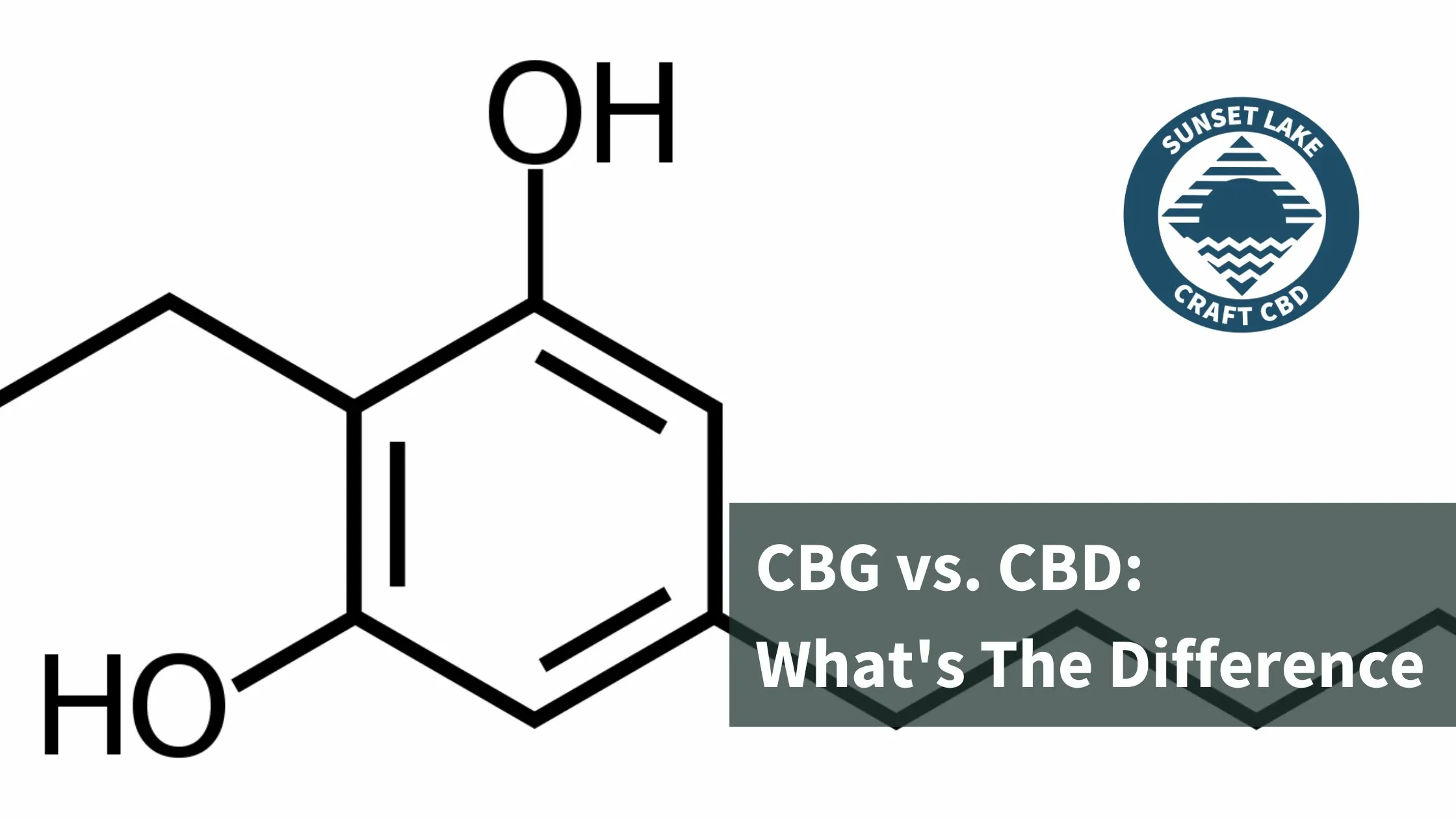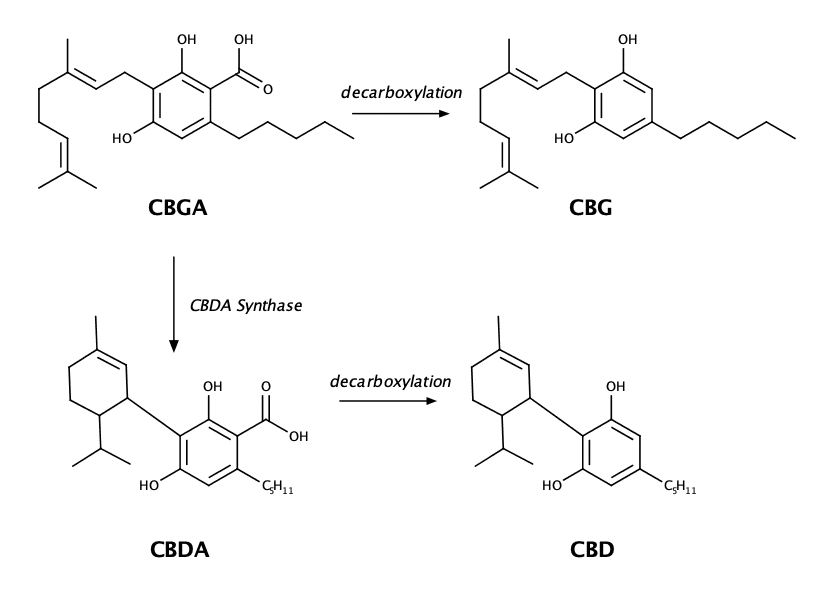CBG vs. CBD: What’s the Difference?

Like its non-intoxicating cousin CBD, CBG is short for cannabigerol and is one of the more than 100+ cannabinoids found in hemp and is now federally legal thanks to the 2018 Farm Bill. CBG isn’t the same as CBD though. In this post, we’ll be covering,
- How CBD wouldn’t exist without CBG
- The differences between CBG vs. CBD
- The unique challenges posed by working with CBG
CBG vs. CBD: Closer Than You May Think
The biggest difference between CBG and CBD is their atomic makeup. Both CBG and CBD come from the same parent cannabinoid: Cannabigerolic Acid (CBGa.) Cannabigerolic Acid turns into CBG through the decarboxylation process during which the CBGa molecule drops its carboxyl acid ring group via heat.
Cannabigerolic Acid is also the precursor to CBD by way of CBGa Synthase; a process in which CBGa transforms into both CBDa and hydrogen peroxide. Some believe that this synthase step may help the hemp plant’s self-defense system. CBDa becomes CBD through the same decarboxylation process described above.

Because of its ability to transform into CBDa, THCa, and CBCa; CBGa is known affectionately to some cannabis scientists as the “Mother of Cannabinoids.”
Side note: Decarboxylation is also a key step during the edible-making process.
Benefits of CBG
Unlike CBD studies, which are increasingly common, CBG research is relatively new and in pre-clinical stages. That said, CBG is showing promising results in some animal studies.
- Like CBD, CBG is believed to have anti-inflammatory properties.
- In early animal models, CBG has been shown to slow and inhibit tumor growth.
- CBG is believed to have neuroprotective properties. If this is true, the molecule could help further research into treatments for Huntington’s Disease, Multiple Sclerosis, and several other diseases.
What we do know: CBG interacts with the brain differently than CBD. Whereas CBD interacts with your body’s periphery endocannabinoid system, CBG interacts directly with the brain’s CB1 and CB2 cannabinoid receptors.
Hard To Handle: CBG vs. CBD
There’s a reason that CBG hasn’t enjoyed the same kind of adoration being given to CBD these last few years: CBG is difficult and expensive to produce.
CBGa, as mentioned earlier, is the precursor to several different cannabinoids found in hemp. So many in fact, that after most of the synthesis takes place, CBG only accounts for <1% of hemp as a percentage of dry weight. Most CBGa in CBD hemp flower turns into CBDa, the inactive acidic form of CBD. That’s by design.
To harvest any significant amount of CBG, hemp breeders revisited the drawing board to figure out how to genetically alter hemp to produce more novel cannabinoids.
Early breeding efforts have been somewhat successful, but CBG-specific strains still need some work. Whereas CBD hemp strains are large and hearty plants that can grow upwards of eight feet tall, many CBG-dominant strains are smaller and more susceptible to blights like powdery mildew.
